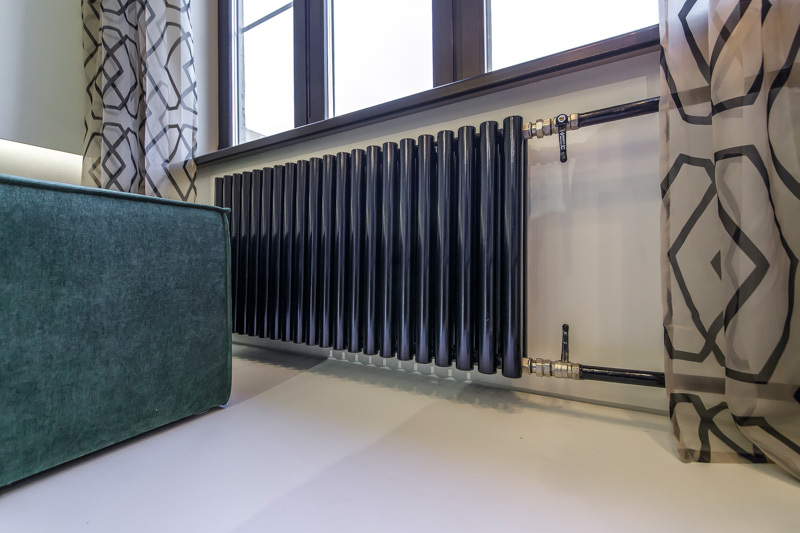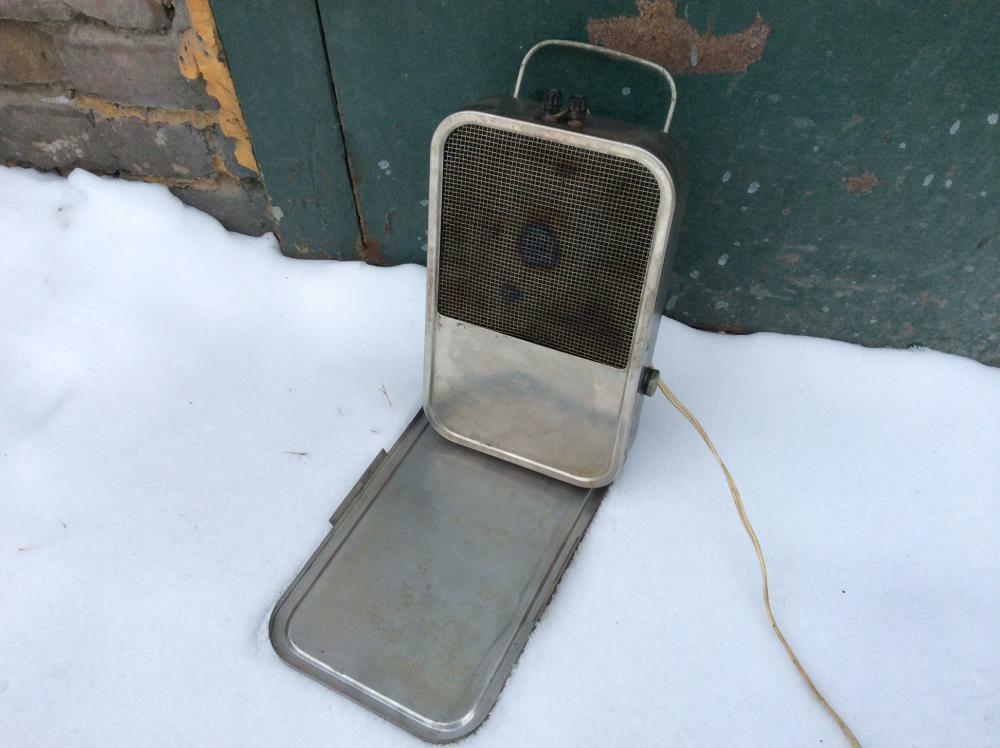In order for the house and apartment to be warm and comfortable in the cold season, it is important to correctly design and install the heating system. And the radiator is one of the important components. It is thanks to the correctly selected equipment that the efficiency of the heating system can be ensured.
But among the rich assortment of batteries presented by manufacturers such as Prado, Konrad, Global Style, Tenrad, Viadrus, Konner and others, it is difficult to navigate, isn't it?
You do not know how to avoid mistakes when choosing and what points should you pay attention to first of all? We will help you understand this issue - in the article we will talk in detail about the criteria for choosing radiators in a private house and in an apartment, which are of paramount importance.
We will also consider the types of equipment and their features. We will give recommendations to buyers, supplementing them with visual photos and useful videos.
The content of the article:
-
Types of batteries and their connection
- Heating radiator classifications
- Instrument connection type
-
Criteria for choosing the best radiator
- Criterion # 1 - material of manufacture
- Criterion # 2 - type of radiator and connection type
- Criterion # 3 - heater power
- Criterion # 4 - Heating / Cooling Rate
- Criterion # 5 - manufacturer's reputation
- Conclusions and useful video on the topic
Types of batteries and their connection
The variety of heating radiators on the market is truly amazing. And it is especially difficult for an unprepared user to make the right choice.
Therefore, within the framework of our article, we will try to consider in detail the types of heating devices, paying attention to their key characteristics, and we will give recommendations on choosing a suitable option, based on living conditions, type of heating system and specific owner's requirements.
Heating radiator classifications
Heating devices used in the water circuit differ in design, material of manufacture, technical characteristics, and design. Next, let's talk in more detail about the types of radiators and their features.
What materials are batteries made of?
The following materials are most often used as a manufacturing material for heating devices:
- steel;
- aluminum;
- cast iron;
- a combination of two metals.
So, steel heating devices can be sectional, panel or tubular. And, depending on the design, their technical characteristics, service life, cost will differ.
The simplest and most inexpensive are panel ones. They withstand working pressure up to 10 bar (the value should be seen in the passport of the corresponding model and specific manufacturer), are vulnerable to water hammer, and in places of welded seams may occur leaks.
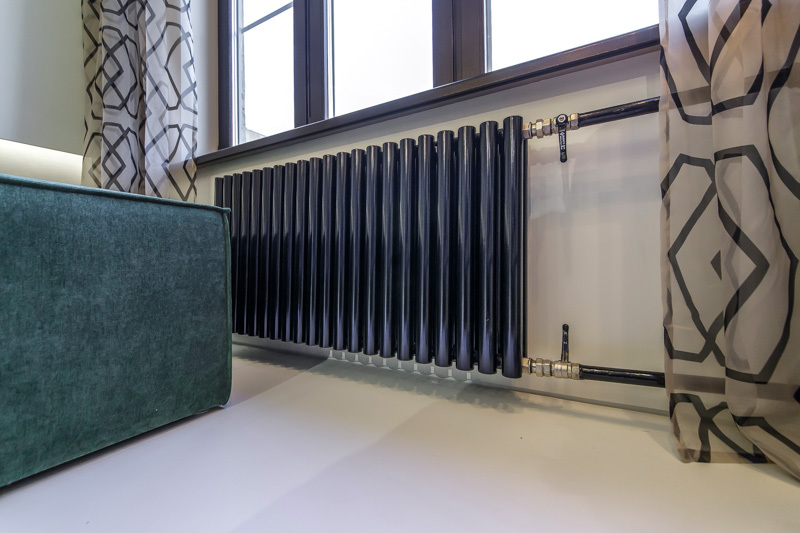
Tubular heating devices are more durable - most often their walls are coated from the inside with a polymer composition, which increases wear resistance, allowing you to extend the service life. They can be sectional or welded.
Radiators from aluminum they heat up quickly enough and give off heat to the room, i.e. have low inertness. Due to the large area of the heating surface, they can quickly warm up the room with their help.
Heating devices from cast iron are characterized by high inertness - they warm up for a long time and cool down for a long time. This property is rated positively by many users who suffer from intermittent heating shutdowns. But, on the other hand, this feature does not allow the use of cast-iron batteries in smart home systems - it is useless to equip most models with thermostats.
Bimetal is not an alloy, but the correct combination of two metals in one product: internal elements bimetal radiator are made of steel (sometimes copper), and the outer ones (body) are made of aluminum. Moreover, the entire "skeleton" can be steel, or its individual parts - a pipeline or vertical guides. The first option is better and more expensive.
We have given more details on the features of radiators made of these types of materials in the next selection of photos.
Image gallery
Photo from
Steel radiators are inferior in thermal power to bimetal, but their cost is also significantly lower. In terms of appearance, the material allows for the production of a wide variety of design shapes.
Aluminum batteries are the most affordable solution. And although this material is inferior in technical characteristics to others, but the low price, ease of installation and ease of maintenance for a number of potential buyers become decisive
Bimetallic heating equipment is characterized by excellent performance characteristics. But the cost of products is higher than that of steel. Therefore, many users are still pondering the advisability of such a purchase.
A heating coil made of cast iron is still a fairly popular solution. They are durable and have a low susceptibility to the quality of the coolant - these characteristics ensure a long service life.
Steel radiator
Aluminum radiator
Composite batteries
Cast iron batteries
In addition to the materials discussed above, copper radiators can be found on the market. But the decision to equip the heating system with such devices will cost the owner of a country house a round sum due to their high cost.
Also, copper is susceptible to the quality of the coolant and requires installation skills.
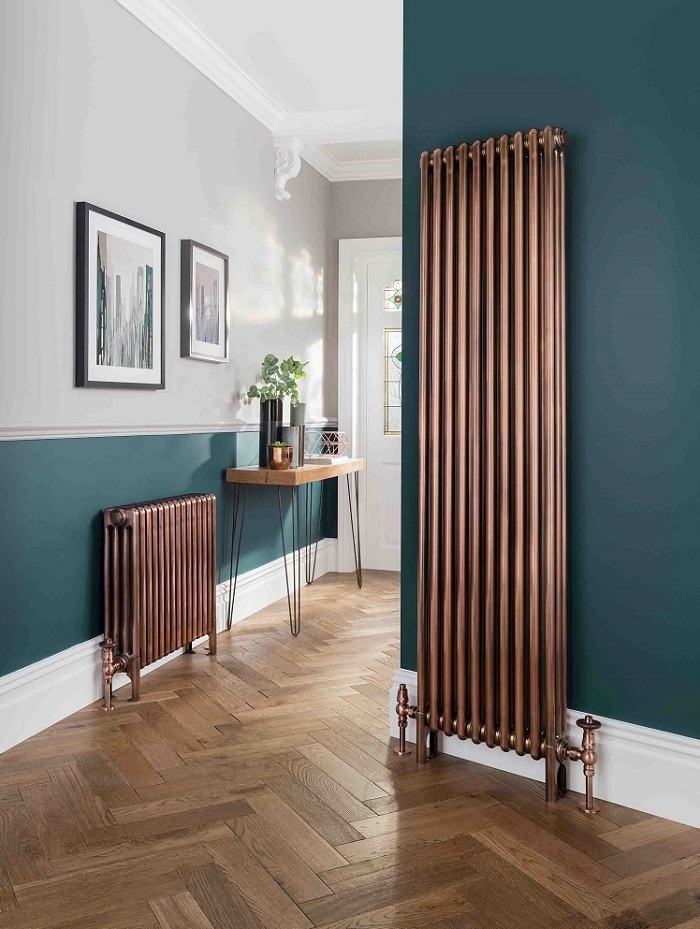
The copper heating battery will harmoniously fit into the autonomous heating system of a country house, where the owner himself will be able to control the quality of the coolant, its heating, etc.
Difference between batteries by type of design
Radiators for the heating system also differ in the type of construction and this is noticeable visually.
Structurally, batteries are:
- sectional;
- panel;
- tubular;
- lamellar.
The most common - sectional. They can be both steel and cast iron, aluminum and bimetallic. Due to the ribbed surface, the heating area exceeds the physical dimensions of the product, which has a positive effect on the efficiency of using the devices.
They consist of individual elements connected to each other by means of nipple bushings and gaskets. It is these components that are the weakest point of this type of heating device. But, if you follow the rules of operation and maintenance of radiators, regularly clean and change them. timely worn out gaskets, then leakage at the joints will not occur, and the product itself will serve long years.
Panel heating devices are one of the most affordable offers on the market. They are lightweight, easy to install, picky to care for, and quickly heat up. But they also cool down quickly. Although this property allows them to be used in conjunction with temperature controllers.
Another type of construction is tubular batteries. They are most popular with designers due to their wide variety of shapes and sizes. They help to create a unique interior of the room, to zone the room, to bring its own flavor.
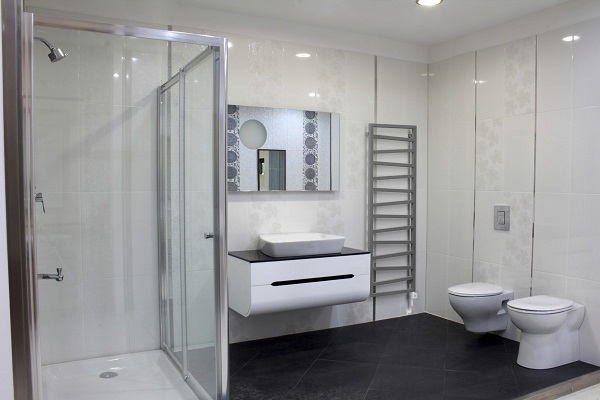
Heated towel rails are a type of tubular radiators. Their design form can be anything that allows them to stand out from the plumbing at all. And users will feel warm and comfortable in a spacious bathroom
Tubular radiators are also quite effective, especially since the length and number of sections can be selected to suit your needs.
Least popular batteries plate type. Such a device consists of pipes through which the coolant circulates, and plates strung on these pipes. The design provides a large heating area, which allows you to quickly and efficiently heat the premises. But the extremely unassuming appearance contributed to the fact that these radiators are used purely for heating industrial buildings and public premises.
The design features of the radiators are clearly demonstrated in the following gallery.
Image gallery
Photo from
Panel-type radiators are structurally composed of plates, inside of which the coolant circulates. They are made of steel. Thanks to its simple shape, such a heating device is easy to care for.
Tubular heating batteries are mainly made of steel. Structurally, they consist of vertical tubes. Their length and number depends on the model - the more, the more powerful the heating device
The sectional type of radiator consists of individual elements combined into one heater of the required power. The length of the section, its height and depth depends entirely on the model.
The plate type radiator is most often used to heat public places, utility and industrial premises. In view of its unpresentable appearance, such a device is closed with a decorative panel.
Panel type construction
Tubular radiator version
Sectional heating battery
Plate heating devices
Instrument connection type
If we talk about the connection, then for heaters for a water heating circuit, it can be:
- lateral;
- bottom.
Sideconnection type assumes that the radiator will be connected to the heating system from the side. Why do manufacturers provide special holes in the design of the product - on the right or on the left. But some manufacturers do not restrict the buyer by making four side holes, and during the manufacture batteries do not weld brackets to it - then the device can be mounted both with the right and left connection.
Bottom connection assumes connection to the supply line and to the return line from below. This is useful if you need to hide pipes.
You can also conditionally highlight universal option - assumes the presence of six connecting holes in the radiator design - two at the bottom and two on each side. The connection method is chosen by the user, based on the characteristics of his heating system. The rest of the holes are closed with plugs.
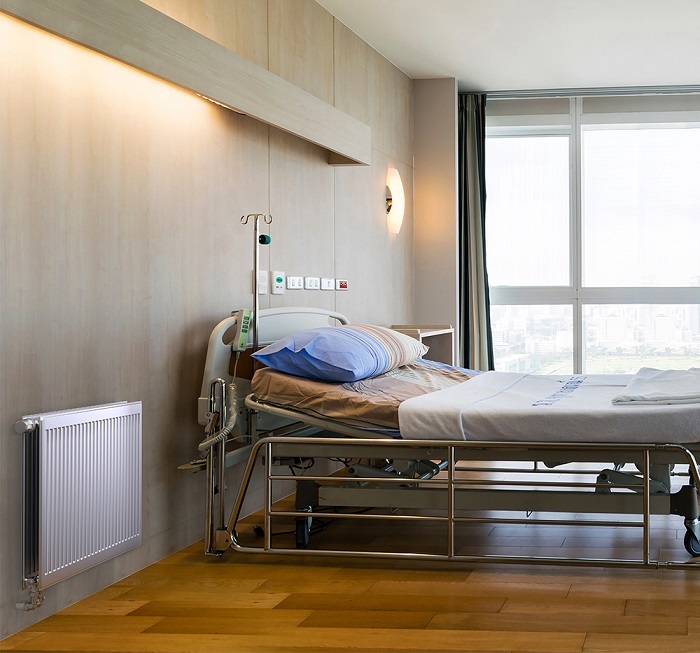
The photo shows the bottom battery connection. The supply and return pipelines are hidden in the wall, where the grooves were specially made at the installation stage.
Criteria for choosing the best radiator
When choosing the right radiator, you have to take into account a number of nuances, starting with the type of material and power, and ending with the design. Moreover, sometimes it is the last parameter that is decisive, especially when a designer is engaged in the design of a country house.
Due to the demand for original shapes and sizes of heating batteries, the modern market can offer interesting solutions. And if necessary, you can order the manufacture of a heater to order. Often interesting products of complex shape - tubular, made of steel.
The next selection will demonstrate that a battery is an independent piece of furniture, sometimes even its highlight.
Image gallery
Photo from
A heater can become anything - at least a bench. Such a simple and functional solution looks stylish and casual
A bottom-connected radiator with floor-standing feet can be easily transformed into an elegant bar counter. For which it is enough to cover it with a tempered glass tabletop on top, while maintaining an indent of 10-12 cm
Elegant batteries 1.5-2 meters long, framed by wood, imitate a bedside table on which you can place decorative interior items - vases, figurines, souvenirs and others dear to the heart, little things
A heating device can become an effective addition to the interior and certainly will not go unnoticed - a huge drop flowing into a chair. But such a battery will look advantageous in large rooms.
Thanks to the intricate shape of the battery, fixed to the wall as a decorative element, it is difficult to recognize the heater in it. But, if you correctly calculate the required power and hang the product by the window, it will be able to fully heat a small room
For rooms with a complex configuration, semicircular batteries are well suited. Most often they are made of steel - its characteristics allow you to give the finished product the desired shape. Moreover, design models of tubular radiators are often cast from steel.
For houses with large windows, it is good to use a thermal curtain. What is used for a special type of radiators - floor-mounted (built into the floor). They can be used as main or auxiliary heating devices
The option of placing batteries in the baseboard is also quite popular among private house owners. Why do you need special radiators and a metal baseboard-box, designed for the installation of such convectors. Along with baseboard heating, they equip warm floors
Radiator bench
Battery bar
Decorative bedside table-stand
The radiator is stylized as an armchair
Original battery on the wall
Semicircular radiator
Floor-mounted radiator
Skirting battery
The ideas of the original use of the battery in the interior discussed above are not limited to this collection. And if you have very simple batteries (still old Soviet ones), do not despair.
They can always be hidden behind a decorative panel or disguised in another way. But in this case, you need to be prepared for heat loss at the level of 5-20% - the exact percentage of heat loss depends on way of disguise, type of box, its shape and size, material of manufacture.
Next, let's talk about the features and characteristics of devices that are of key importance when choosing a suitable radiator.
Criterion # 1 - material of manufacture
When choosing radiators based on the material of manufacture, it is important first of all to analyze the specific operating conditions. Which will be significantly different for a private house and apartment.
The best radiators for a private house
Private houses have autonomous heating. And it is very convenient - the owner does not depend on interruptions and sudden outages of district heating and can control the operating parameters of the system himself - system pressure, coolant quality and its heating temperature.
Therefore, for installation in such systems, you can use steel, aluminum, bimetallic, copper and cast iron batteries - whatever your heart desires. Moreover, in country houses, where the interior is developed by designers, it is quite often tubular heating devices of an intricate shape that are used.
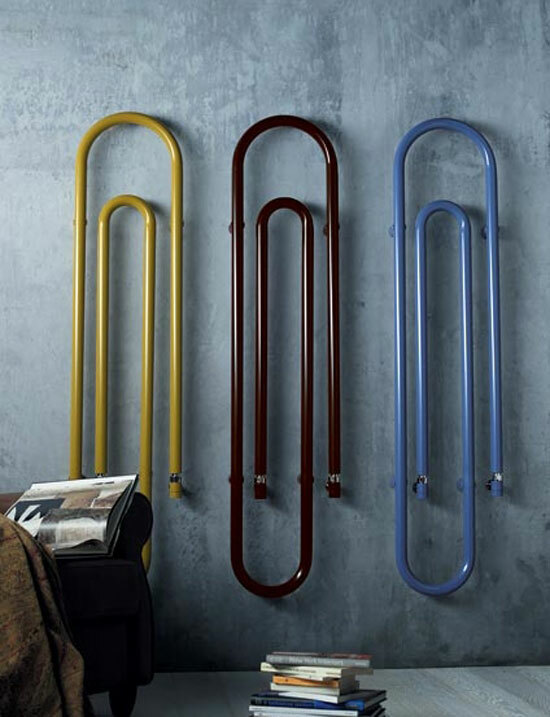
Often, it is for private houses and cottages with autonomous heating that original radiators are bought. With their help, it is possible to transform the room, bring something original
If the heating system is set up in a small house that will be used from time to time, and the owner has allocated a modest budget, then it is quite possible to stop at panel batteries made of steel - they quickly heat up themselves and quickly warm up premises.
Also, very little coolant is placed in them, so it will not take much time to fill the system upon arrival and drain the liquid upon departure.
The optimal solution for an apartment
But in apartments, in most cases, centralized heating. And this means that the owners of such housing cannot in any way affect the composition and temperature of the coolant (water with impurities), the pressure in the pipeline, which is higher than in autonomous systems.
And in the case of water hammer, it increases many times. Therefore, the purchase of steel panel batteries should be immediately abandoned, giving preference to bimetallic ones. Which are able to withstand pressures of 20 bar, 50 or more.
By the way, with regard to the specific value of the working pressure, it is indicated in the passport of the device. And it would be good to immediately ask the seller to look at the test report to make sure that the declared indicators are not embellished, but are confirmed by real tests.
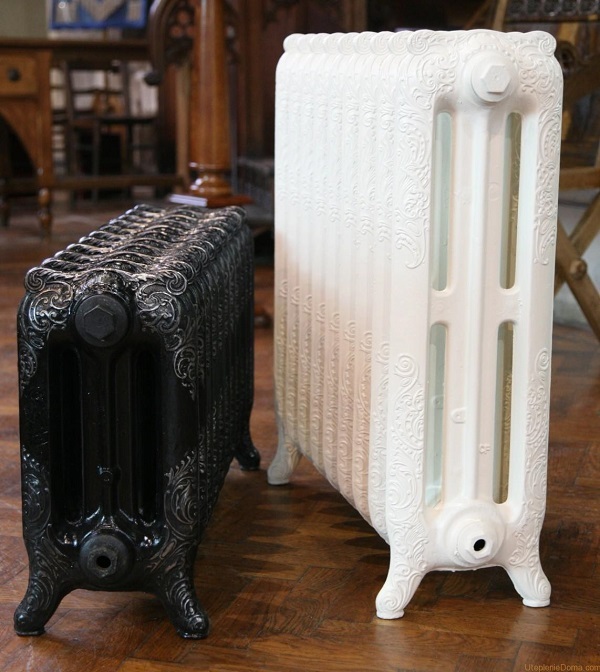
Cast iron batteries are also suitable for district heating systems - they are less sensitive to the presence of impurities in the coolant. The only thing that is required is to periodically disassemble and clean the devices inside and out.
Separately, it should be said about apartments with an autonomous heating system - here the conditions are the same as those of the owners of a private house. Therefore, it is not necessary to choose practical and expensive bimetallic radiators - with a tight financial situation, it is quite possible to stop at aluminum.
Criterion # 2 - type of radiator and connection type
As for the choice of the type of construction and connection, here you need to take into account the specific conditions and your preferences. So, for apartments, sectional batteries are most often taken, selecting the required power. But for private houses, any are suitable - panel, tubular and sectional.
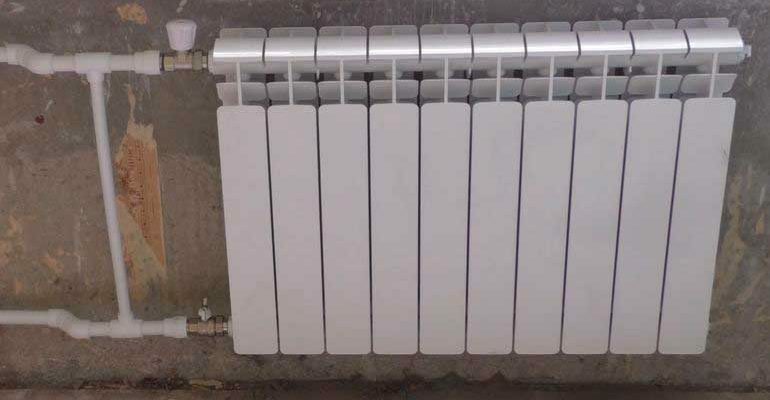
In apartments with centralized heating, there is often no choice according to the type of connection - you have to buy batteries based on the location of the riser. Quite often, this is a lateral right-handed or lateral left-handed connection.
But in private houses, owners can afford to design the arrangement of risers, pipelines and heating devices at their discretion.
When choosing radiators, it is important to immediately pay attention to the package contents - whether there are accessories for installation and connection or they have to be purchased separately. If you need to buy in addition, you should definitely pay attention to the diameter (most often 1/2 ", but it can be different).
Criterion # 3 - heater power
Also, when choosing batteries, it is imperative to focus on the thermal power of the equipment. Indeed, for the device of an effective heating system, it is necessary to correctly calculate the power of the radiators.
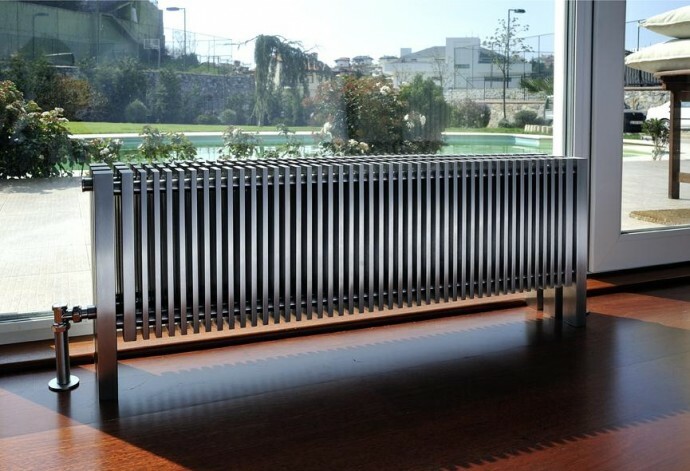
If we take the average value for rooms with a ceiling height of up to 2.7 m, then 1 kW will be required to heat 10 m2. Based on these indicators, the battery power is calculated
Before buying, it is imperative to check which power indicator is indicated in the device's passport and compare whether it corresponds to the figure noted in the test report.
Many manufacturers do not conduct any tests at all, but enter in the passport any suitable value that is attractive to potential buyers. Naturally, the products of such firms are best avoided.
Criterion # 4 - Heating / Cooling Rate
The indicator of the rate of temperature change by radiators is important if you plan to equip a climate control system. For such purposes, devices with low inertia are suitable - they quickly heat up and cool down.
That allows you to set the desired temperature in the room and control its values by equipping radiators thermostats.

Bimetallic, aluminum and steel devices lend themselves well to adjustment. But cast iron - have great inertness. Therefore, it makes no sense to supplement them with regulators.
Criterion # 5 - manufacturer's reputation
When choosing a radiator, it is better to give preference to proven brands with a good reputation, including:
- Steel - Lidea, Konrad, Prado, Charlston, Kermi, Arbonia, Israp Tesi, Buderus PURMO, Delonghi, Korado.
- Aluminum - Global, Rifar, Ferroli, Purmo, Radena, Faral Trio.
- Cast iron - Adarad, Viadrus, Demrad, KIRAN, Konner, Cheboksary plant and Minsk plant.
- Bimetallic - Global Style, Sira, Rifar, Tenrad, Halsen, Radena, Rommer.
As you can see, many manufacturers produce more than one type of radiator, which differ in the material of manufacture and other characteristics.
But sometimes it is difficult to distinguish an aluminum radiator from a bimetallic one, the cost of which is much higher. This is what an unscrupulous seller can take advantage of. Therefore, before buying, you can conduct a test, for example, with a magnet - the magnet will always be attracted to the bimetal.
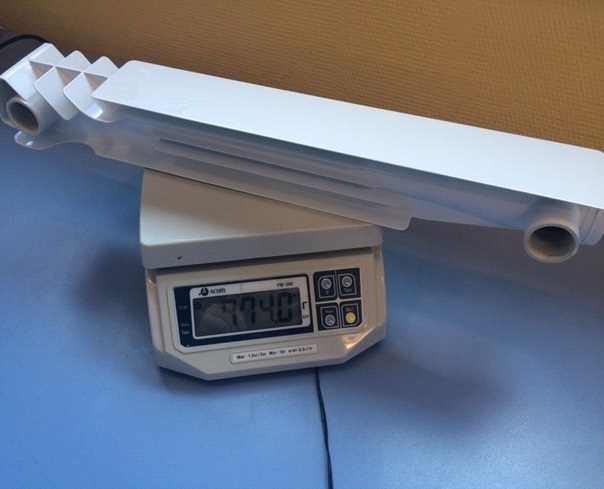
Another way to check the accuracy of the information from the seller is to weigh the radiator section. So, bimetal is always heavier than aluminum - 1.5-2 kg for bimetal versus 0.7-1.5 kg for aluminum
All respectable manufacturers of heating equipment on the market produce marked goods that meet the requirements of GOST 31311-2005.
Therefore, if the model you like does not have accompanying documents, there is no marking on the radiator case, then this is a fake or a product of an unknown manufacturer. Buying such a device is a dubious event.
Conclusions and useful video on the topic
Detailed recommendations for the selection of heating devices:
The test of steel radiators is clearly demonstrated in this video:
Correctly selected heating radiators will ensure a comfortable temperature in the cold season. It is important not only to correctly determine the power of heating devices, but also to take into account the type of material - not every radiator is able to withstand the impact coolantcirculating in the pipeline of the centralized heating system.
The impurities contained in the liquid act especially destructively on the walls of aluminum radiators. Therefore, it is better for apartment owners to opt for cast iron and bimetallic batteries.
And in a private house, you can install radiators from any material - the main thing during operation is to adhere to the recommendations prescribed by the manufacturer in the instructions.
Do you still have questions about choosing the right heater for your heating system? Or would you like to share your personal experience in the selection and installation of radiators? Tell us what kind of batteries you preferred and whether you are happy with your choice, ask questions to our experts and participate in the discussion - the comment form is located below.

